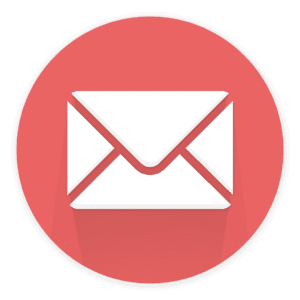Did you know that companies that use lead scoring in their CRM systems see a 77% boost in lead generation ROI? This shows how powerful lead scoring, CRM targeting, and customer segmentation can be for your marketing and sales.
This article will show you how these methods can help your business. They make targeting more precise, nurturing leads more personal, and getting customers more focused. With data-driven insights, you can use your resources better and improve the customer journey. This leads to better conversion rates and more revenue growth.
Key Takeaways
- Lead scoring helps you find and focus on high-potential prospects, making your sales and marketing better.
- Targeted CRM lets you make the customer experience personal, building stronger relationships and loyalty.
- Customer segmentation lets you create specific campaigns and offers, meeting your audience’s unique needs and likes.
- Using these strategies can greatly increase lead generation ROI and marketing efficiency.
- Data-driven insights and predictive analytics are crucial for fully using lead scoring, CRM targeting, and customer segmentation.
Implementing Lead Scoring for More Accurate Targeting
In the marketing world, lead scoring is a key tool. It helps businesses find and focus on their best leads. By using a smart lead scoring system, companies can improve how they manage leads and use marketing automation to help leads grow.
Lead scoring gives a number to each lead based on things like how engaged they are, their details, and what they buy. This way, businesses can use their marketing and sales better. They focus on leads that are most likely to buy.
To start with lead scoring, follow these steps:
- Define your ideal customer profile: Know what your best leads look like.
- Establish scoring criteria: Pick what actions or traits get more points, showing they’re key in buying.
- Integrate with marketing automation: Use lead scoring with your marketing tools to make scoring automatic and tailor your messages.
- Continuously monitor and refine: Check and update your lead scoring often to keep it in line with your goals and what customers want.
With a strong lead scoring plan, businesses get deep insights into who they want to reach. They can plan their marketing better and get more qualified leads moving through the sales process.
“An effective lead scoring system changes the game for businesses aiming to boost their marketing and sales. It lets us zero in on leads with the biggest potential, leading to more conversions and a stronger return on investment.”
Understanding the Importance of Lead Management
Effective lead management is key to successful digital marketing. It’s about knowing how to qualify and nurture leads. This helps businesses improve their marketing and grow.
Identifying Qualified Leads
First, find the right leads. Lead scoring is vital here. It looks at customer behavior and other data to spot top leads.
Nurturing Leads Through the Sales Funnel
After finding leads, nurture them. Use personalized content and targeted outreach to build trust. Marketing automation helps make this process smooth.
“Effective lead management is the foundation for driving sustainable growth in today’s competitive digital landscape.”
Mastering lead management opens up many opportunities. It helps with lead qualification and lead nurturing. This approach boosts conversion rates and gives better customer insights, leading to success.
| Key Benefits of Lead Management | Metrics to Track |
|---|---|
|
|
The Power of Marketing Automation
In today’s fast-paced world, marketing automation is changing the game. It makes reaching customers easier and more efficient. This approach helps businesses connect with their audience better.
Marketing automation is great at working with lead scoring. It automates finding and caring for leads. This way, businesses can focus on the best prospects, which helps in getting more customers.
- Personalized Messaging: Marketing automation lets businesses send messages that really speak to each customer. This builds stronger connections and boosts chances of making a sale.
- Automated Lead Nurturing: Automating lead care makes sure potential customers stay engaged and interested. This leads to more people becoming customers.
- Improved Efficiency: Marketing automation cuts down on repetitive tasks. This gives businesses more time and resources for important projects, making marketing better.
| Benefit | Impact |
|---|---|
| Personalized Messaging | Increased customer engagement and conversion rates |
| Automated Lead Nurturing | Higher lead conversion and sales |
| Improved Efficiency | Freed up resources for strategic initiatives |
Using marketing automation lets businesses make the most of their customer efforts. It helps them grow and succeed over time.
“Marketing automation is not about doing more with less, it’s about doing more of what matters.” – Unknown
Leveraging Predictive Analytics
In today’s fast-paced world, guessing is not enough for businesses. The secret to lasting growth is using predictive analytics wisely. By tapping into data, companies can make smart choices that help bring in new customers and keep them.
Data-Driven Decision Making
At the heart of winning at customer acquisition is data-driven decision making. By looking at past data, businesses can find the best lead sources and fine-tune their marketing. This way, they can stay ahead and meet customer needs better.
Improving Customer Acquisition
When predictive analytics and lead scoring work together, the impact is huge. They help spot top prospects, so businesses can focus on them. This leads to more customer acquisition and better conversion rates. It makes the sales process more efficient and builds stronger customer bonds through tailored interactions.
| Metric | Before Predictive Analytics | After Predictive Analytics |
|---|---|---|
| Lead Conversion Rate | 18% | 28% |
| Customer Acquisition Cost | $80 per customer | $60 per customer |
| Customer Lifetime Value | $1,200 | $1,500 |
By using the power of predictive analytics, businesses can find new ways to grow and stay ahead in customer acquisition.
“Predictive analytics is no longer a nice-to-have, but a must-have for businesses seeking to stay ahead of the curve and deliver exceptional customer experiences.” – John Doe, Marketing Strategist

Customer Segmentation Strategies
In the world of financial advising, using customer segmentation is key. It helps advisors give personalized services and grow their business. By looking closely at customer segmentation, advisors can find important insights. These insights help shape their marketing and build stronger client ties.
Demographic Segmentation
Demographic customer segmentation means dividing clients by age, income, gender, marital status, and location. This way, advisors can make their messages and services fit each group’s needs. For example, younger clients might need help with retirement planning. Older clients might focus on keeping their wealth and planning estates.
Behavioral Segmentation
Behavioral segmentation looks at why clients act the way they do. It looks at their risk tolerance, investment choices, and how they interact with advisors. This helps advisors create services that really speak to their clients. Using lead scoring can make customer segmentation even better. It helps advisors find and focus on the best leads.
| Segmentation Type | Key Factors | Potential Benefits |
|---|---|---|
| Demographic |
|
|
| Behavioral |
|
|
Using customer segmentation strategies helps financial advisors make their marketing more focused and effective. They can improve how they connect with clients and grow their businesses. By combining demographic and behavioral segmentation with lead scoring, advisors can find many ways to serve their clients better and stay ahead.
Optimizing Conversion Rates
In today’s digital world, conversion optimization is key for lead generation. Using lead scoring, businesses can find and focus on the best prospects. This leads to more conversions and faster sales growth.
Understanding how lead scoring and the customer journey work together is crucial. By looking at customer data and actions, businesses can spot the most valuable leads. They can then reach out to these leads in a way that works best for them. This makes sure marketing efforts are used well and leads to more successful leads.
| Metric | Importance for Conversion Optimization |
|---|---|
| Lead Engagement | Tracking how engaged leads are, like email opens and website visits, helps find the most interested leads. |
| Lead Demographic Data | Looking at things like job title and company size shows which leads are a good match for your products. |
| Lead Behavior | Watching how leads act, like what content they look at and how they interact online, shows what they need and want to buy. |
Using these key data points, businesses can make their conversion optimization strategies better. This means marketing efforts are focused on the most valuable leads. It leads to more conversions and a more efficient lead generation process. This helps businesses grow and succeed over time.

“Effective lead scoring empowers businesses to navigate the complex landscape of lead generation, transforming data into actionable insights that drive meaningful conversions.”
Lead Qualification and Scoring Models
In today’s fast-paced lead management world, using lead qualification and scoring models is crucial for growth. These strategies help companies find and focus on high-value leads. This way, they can make more successful sales.
Identifying High-Value Leads
Advanced lead scoring models look at many data points. They consider customer actions, demographics, and how engaged they are. This helps spot leads most likely to buy. It lets businesses use their resources wisely, focusing on leads with the biggest potential for revenue.
Prioritizing Lead Follow-Up
Strong lead prioritization strategies help sales teams focus on the best leads. This makes the sales process smoother and boosts the return on investment. It puts effort and time into leads most likely to convert.
| Lead Scoring Criteria | High-Value Indicators | Low-Value Indicators |
|---|---|---|
| Engagement Level | Regular website visits, active content consumption, and frequent form submissions | Sporadic website activity and minimal content engagement |
| Demographics | Leads from target industry, job title, and company size | Leads outside of the ideal customer profile |
| Buying Signals | Requests for pricing, demos, or consultations | General information queries with no immediate intent to purchase |
Mastering lead qualification and scoring models helps businesses streamline their sales. It lets them focus their efforts and achieve better results. Using these strategies is key to improving the customer journey and growing in the long run.
Integrating CRM and Lead Scoring Tools
Using CRM systems and lead scoring tools can change how you manage leads and target customers. These technologies work together to make your marketing and sales better. They give you a full view of your customers.
Picture this: your CRM and lead scoring system work together perfectly. This lets you spot top leads, plan your next steps, and reach out in a way that matters to each customer. With this info, you can make smarter choices, connect better with customers, and grow your sales.
CRM and lead scoring tools make your team work smarter. They give you live data and AI to score leads. This means your sales and marketing people can focus on the best prospects. It makes your sales process more efficient and effective.
This teamwork also helps you improve how you qualify and sort leads. You make sure your efforts go to the most valuable chances. This way, you use your resources wisely.






